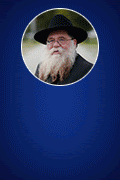Founded in the late 1700s, the Chabad Lubavitch movement originated in Belarus, which was then part of imperial Russia. Lubavitch takes its name from a small town in Belarus, which means “town of love” in Russian. The Chabad Lubavitch movement had a large following in the 19th and 20th centuries until it was nearly destroyed by Bolshevik governments and the Nazis.
After World War II ended, Chabad founded an outreach movement that brought many assimilated Jews back to Judaism worldwide. This Chabad ideology has influenced non-Hasidic Jews' practices, especially where outreach programs are concerned.
It began in ‘the town of love’
Chabad Lubavitch is one of the largest branches of Hasidic Judaism and one of the largest Jewish Orthodox movements in the world, according to the online encyclopedia Wikipedia.
Founded in the late 1700s, the Chabad Lubavitch movement originated in Belarus, which was then part of imperial Russia. Lubavitch takes its name from a small town in Belarus, which means “town of love” in Russian. The Chabad Lubavitch movement had a large following in the 19th and 20th centuries until it was nearly destroyed by Bolshevik governments and the Nazis.
After World War II ended, Chabad founded an outreach movement that brought many assimilated Jews back to Judaism worldwide. This Chabad ideology has influenced non-Hasidic Jews’ practices, especially where outreach programs are concerned.
Chabad Judaism has been controversial within Judaism since its creation. Rabbi Israel Baal Shem Tov, the founder of Hasidim, gained popularity for his interpretations of the Torah and Jewish law. While his movement gained momentum, the rabbi and his beliefs also endured a backlash from opponents of Hasidim, called the Mitnagdim.
After the death of Baal Shem Tov’s successor, Rabbi Dobver of Mezeritch, differences between Hasidim and the Mitnagdim practices intensified, and Rabbi Shneur Zalman and his followers were persecuted. Some of the issues included defining the rules for ritual slaughter and the phrasing of prayers.
Controversy still swirls today about whether members of the Mitnagdim told the Russian government that Zalman was encouraging followers to send money to Palestine. At that time, Palestine was part of the Ottoman Empire and at war with Russia.
Zalman was arrested for treason and the day of his release is revered in Hasidic culture. The controversy continued into the 20th century during the seventh rabbi’s life.
Since its creation, Chabad has had seven leaders or rabbis. The seventh, Rabbi Menachem Mendel Schneerson, led the Chabad branch until his death in 1994. Many of Schneerson’s beliefs were rejected by assimilated Jews. Schneerson called for men to grow beards and for married women to cover their hair while in public.
His encouragement of public displays of religious preference were criticized by both traditional and liberal Jews. Some of Schneerson’s followers were encouraged to hold public Hanukkah celebrations. Many Jews questioned publicly displaying the Jewish menorah. In the early 1990s, Schneerson also announced that he believed the world was on the cusp of redemption and the coming of the Jewish messiah.
Chabad Judaism has emissaries who assist Jews with their physical, religious and spiritual guidance needs regardless of denomination or affiliation.
A Chabad house or center is a type of Jewish community center. It often serves as a headquarters for outreach and educational activities. There are more than 4,000 Chabad centers in 70 countries.













shmuli
very nice article, thanks for sharing it with us!!! YEAH there is still goods out there, keap them coming…